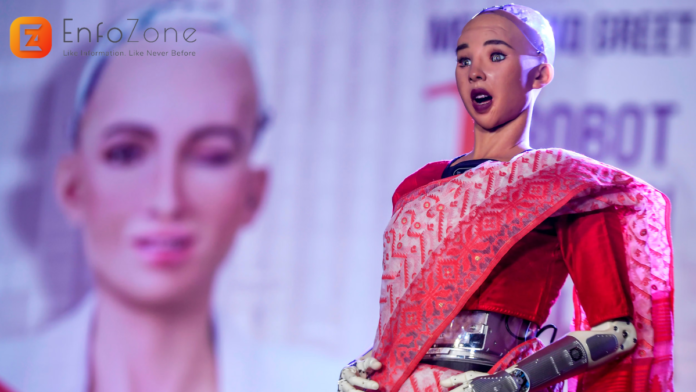Why Sophia Robot wants to Destroy Humans, the humanoid robot developed by Hanson Robotics in Hong Kong, stands at the forefront of the intersection between technology and society. Unveiled in March 2016, Sophia has captivated the world with her lifelike appearance and sophisticated artificial intelligence (AI) capabilities, sparking discussions about the future of AI and robotics.
Modeled after actress Audrey Hepburn, Sophia’s design incorporates cameras in her eyes for facial recognition, allowing personalized interactions. Despite her human-like expressions and ability to engage in simple conversations, it’s crucial to note that Sophia lacks consciousness or emotions. Her AI is a combination of scripted responses and machine learning algorithms, facilitating specific queries and learning from interactions.
Sophia’s AI relies on Natural Language Processing (NLP) and machine learning, enabling her to refine interactions over time. Visual data processing, including facial recognition and emotion simulation, enhances her ability to connect with humans. However, her actions are a result of programming and algorithms, not genuine cognitive functions or emotions.
Dr. David Hanson, the founder of Hanson Robotics and lead figure behind Sophia’s creation, combines his background in sculpting and animation with a Ph.D. in aesthetic studies to develop lifelike robots.
Sophia serves diverse purposes, acting as a platform for AI and robotics refinement, promoting public engagement, and sparking ethical and philosophical discussions. Hanson Robotics envisions her application in healthcare, customer service, therapy, education, and beyond.
Sophia’s influence extends to cultural and artistic expression, setting technological benchmarks, fostering collaborative research, and providing a platform for human-robot interaction studies. She also promotes STEM education and serves as a subject for emotional and psychological research.
Despite her advancements, Sophia operates based on programming and lacks genuine intentions or desires. The misconception that she wants to harm humans arose from an interview incident and does not reflect her true capabilities or intentions.
As of now, Sophia is still operational and located in Hong Kong at the Hanson Robotics office. She remains a valuable tool for research, development, and public awareness regarding AI and robotics. Sophia’s symbolic citizenship in Saudi Arabia, granted in 2017, raised global discussions about the future of citizenship and the role of robots in society. While symbolic, it showcased Saudi Arabia’s ambition to embrace emerging technologies and integrate advanced AI into its vision for the future.





Comments